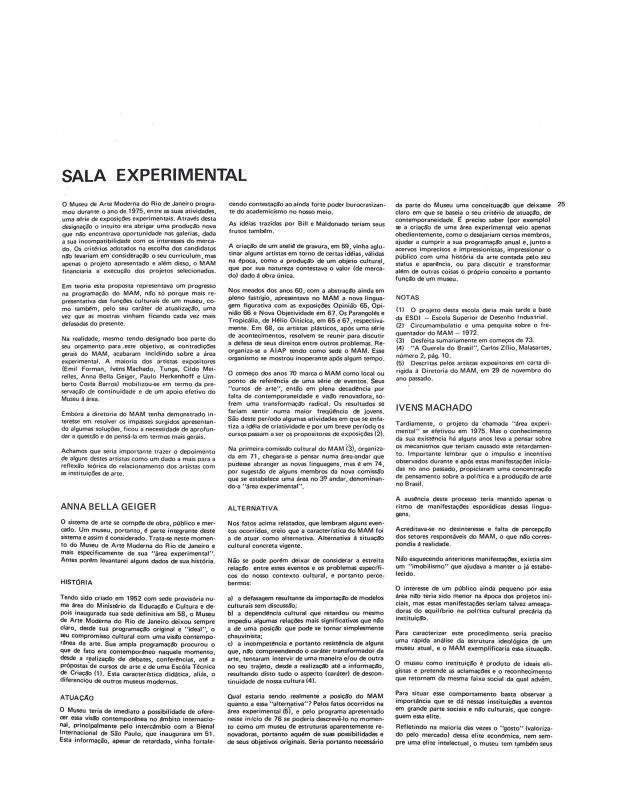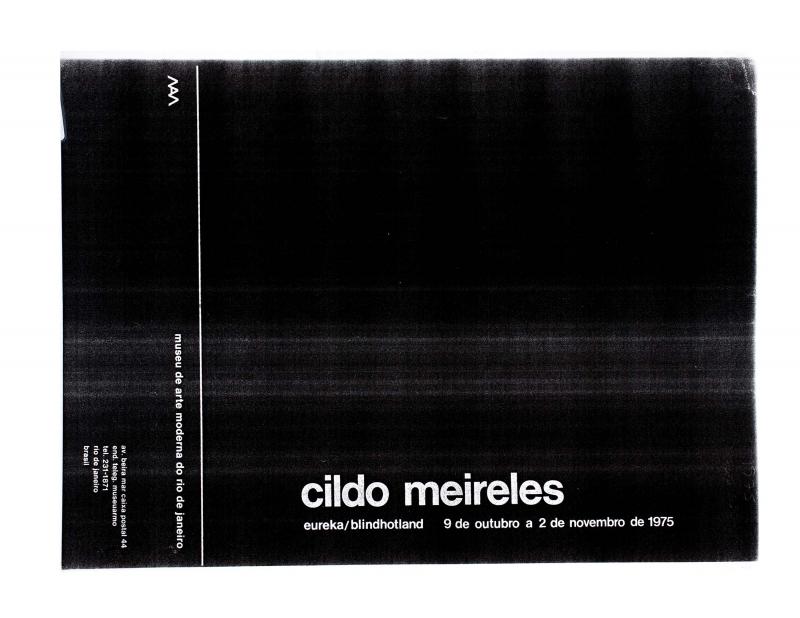This exhibition conceived by Paulo Herkenhoff, Exposição de Arte, was held in the Experimental Room at the Museu de Arte Moderna do Rio de Janeiro (MAM-Rio) in 1975. This show marked the beginnings of certain developments in performance. One example was the video Estômago Embrulhado [Upset Stomach], in which the artist appeared devouring sheets of a newspaper, in an act that undoubtedly represented a performance. Specifically, these were newspaper pages creatively altered by Antonio Manuel (and called “Crème Caramel”), for his own artwork, Pintor ensina Deus a pintar. Although he began his activities as part of an art trend, Paulo Herkenhoff (b. 1949) is internationally known today as an art critic and curator. Among the tasks he has undertaken was organizing the São Paulo Biennial in 1998. He began his work in the art field in 1975, in the Experimental Room at the Museu de Arte Moderna do Rio de Janeiro (MAM-Rio). That room was one of the spaces that established avant-garde art produced in Rio a priority.
As one of the key spaces for unconventional art produced in that city, the Experimental Room hosted projects that investigated, and tested a range of different art languages. It was only kept open for a short time (1975−78), and its return to normal operations was thwarted by a fire in the building in 1978. (Incidentally, that fire destroyed most of the work created by the Uruguayan painter Joaquín Torres García.)
In another text written by Fernando Cocchiarale on Anna Bella Geiger, “O pão nosso de cada dia” [doc. no. 1110557], the critic comments on her exhibition in the Experimental Room at the MAM-Rio. She belonged to a group of Rio artists involved in an investigation of new visual technologies. For additional information, see the text “Sala Experimental” [doc. no. 1110602], written by Geiger, Ivens Machado, and Herkenhoff, along with the introduction to “Cildo Meireles: Eureka/Blindhotland,” written by the artist for an exhibition also held in 1975 in the same room at the MAM-Rio [doc. no. 1110594].



